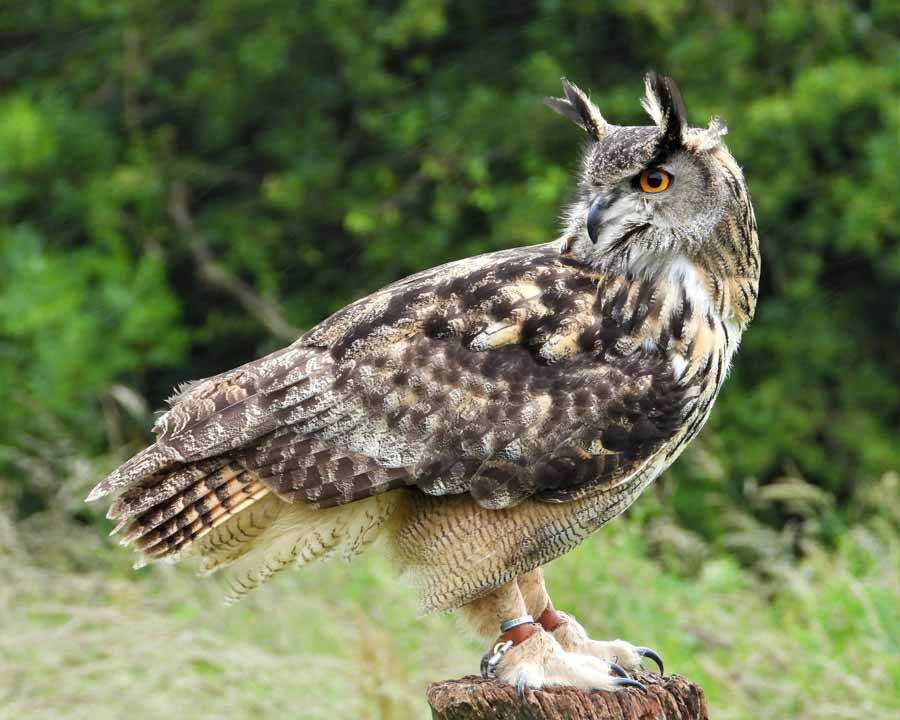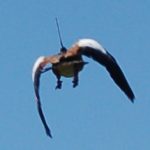← Back
Eagle-owls perching on powerlines

Eurasian eagle-owls are the largest owl in the world, found in a large range of different environments. They usually perche on high lookout-points, electric poles included, which is a high risk for them. Argos enables to better understand their behaviour in scarce vegetation Norwegian islands, to help and protect them.
The Eurasian eagle-owl (Bubo bubo) is the largest owl species in the world. It is a nocturnal raptor, found in a large range of different environments. In Norway, it is mainly distributed from southern Norway up to the Arctic circle, where it feeds mainly on water vole, but it is a versatile hunter. The species, in decline since 1900, was protected in 1971 and is classified as an endangered species on the Norwegian Red List for Species.
However, to hunt it usually perches on high lookout-points. When the vegetation consists in low bushes, heather and bogs, and no high trees, electric poles can attract the eagle owls, with a high electrocution risk.
More info about animal tracking with Argos
Tracking eagle-owls on an Arctic archipelago
18 nestlings and 5 adults were equipped with satellite tags from 2009 to 2014 in the archipelago of Solværøyane, Nordland county (12°35’ E, 66°22’ N), close to the Arctic circle. The islands have a population of at most 26 breeding pairs of eagle-owls.
In summer the eagle-owls must hunt in light conditions, but, on the other end, solar-powered tags are ineffective in the long winter night. A mix of battery and solar-powered tags were thus used. Some adults managed to remove the tag attachments, which were afterwards modified.
![All GPS positions of all individual Eagle-Owls tagged with GPS transmitters. Location map refers to the southern part of Fennoscandia with the study area of Solværøyane (12°35’ E, 66°22’ N) indicated with an arrow and a black dot.(from [Nygård et al., 2023])](https://www.argos-system.org/wp-content/uploads/2023/11/GPS-positions-of-individual-Eagle-Owls-tagged-with-GPS-transmitters.jpg)
None of the tracked eagle-owl left the archipelago and went to the mainland, possibly due to the sea acting as a barrier for them. The juveniles’ movement were much more diversified, and longer-range than those of the adults, as the young do not hold a territory yet.
The islands have 9 km of powerlines, with 138 poles, and very few and low trees. Eagle-owls’ locations less than 200 m and 20 m of those poles were estimated, with the assumption that positions less than 20 m from them probably were of birds using them as a perch. Very few juveniles were located less than 20 m from a pole, but between 14 and 22% of adult locations were, which is more than a random dispersion would imply.
A mitigation device to avoid eagle-owls perching on powerlines
An arm fitted onto the pole crossbar with an elevated extension to the side, and spikes extending upwards on the full length of the crossbar was designed as a suggestion by the team, and tested. The idea being to have the bird perch on the extension rather than on the pole itself.
The eagle-owls used the devices after mounting, so these may reduce the mortality caused by the electricity grid in this species. Several grid-owners in coastal areas are now using them, followed up by the National action plan for eagle-owl in Norway.
![Eagle-Owl perching on a power-pole with deterrent devices fitted. Photo: Karl-Otto Jacobsen. (from [Nygård et al., 2023])](https://www.argos-system.org/wp-content/uploads/2023/11/Eagle-Owl-perching-on-a-power-pole.jpg)
Reference
Nygård T, Jacobsen KO, Gjershaug JO, Home-range, movements and use of powerline poles of Eagle-Owls (Bubo bubo) at an island population in northern Norway, Ornis Fenn 2023; 100 (2): 99-111 https://doi.org/10.51812/of.116340
Main Photo: An eagle-owl, huw edwards for unsplash


